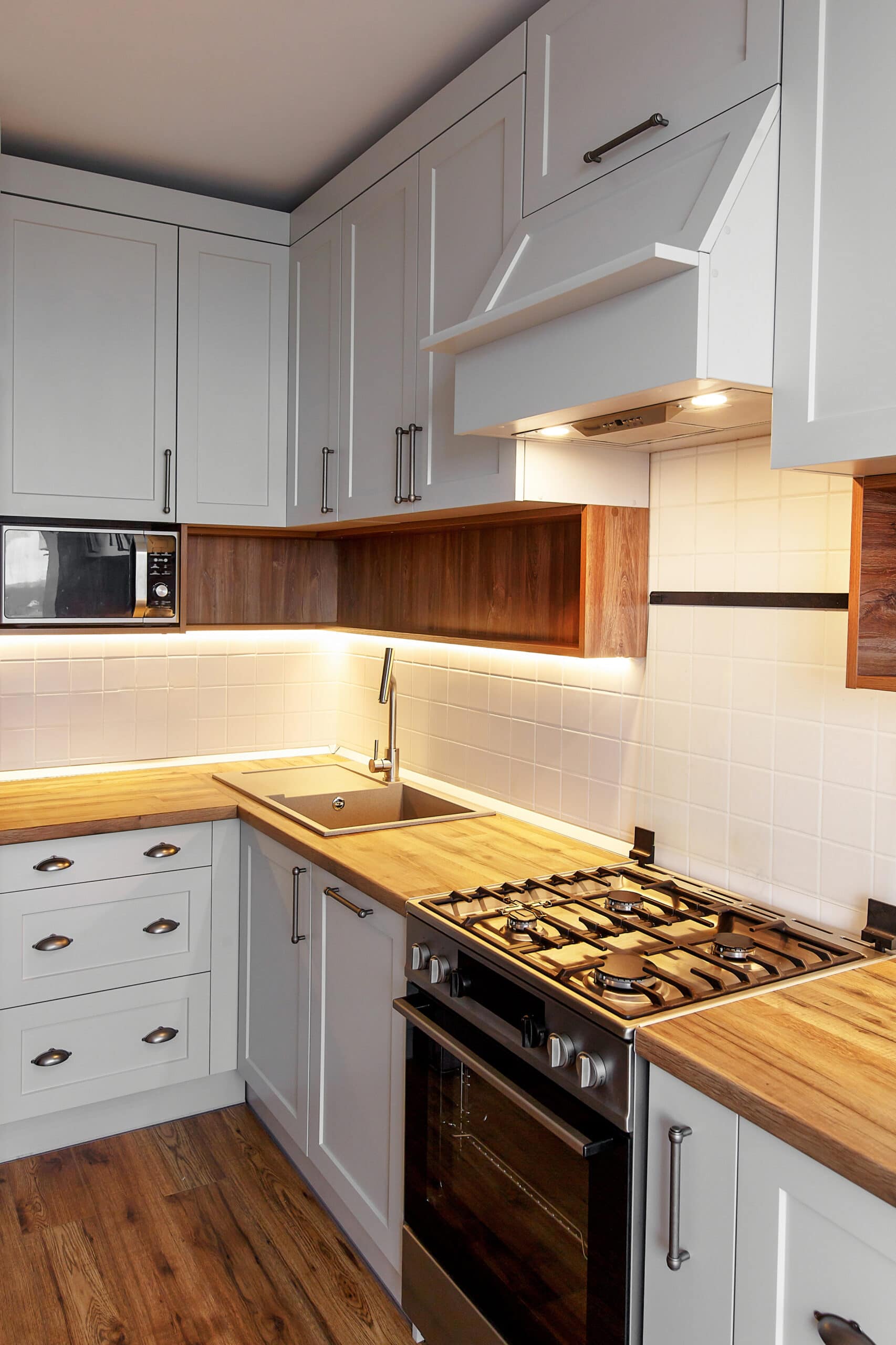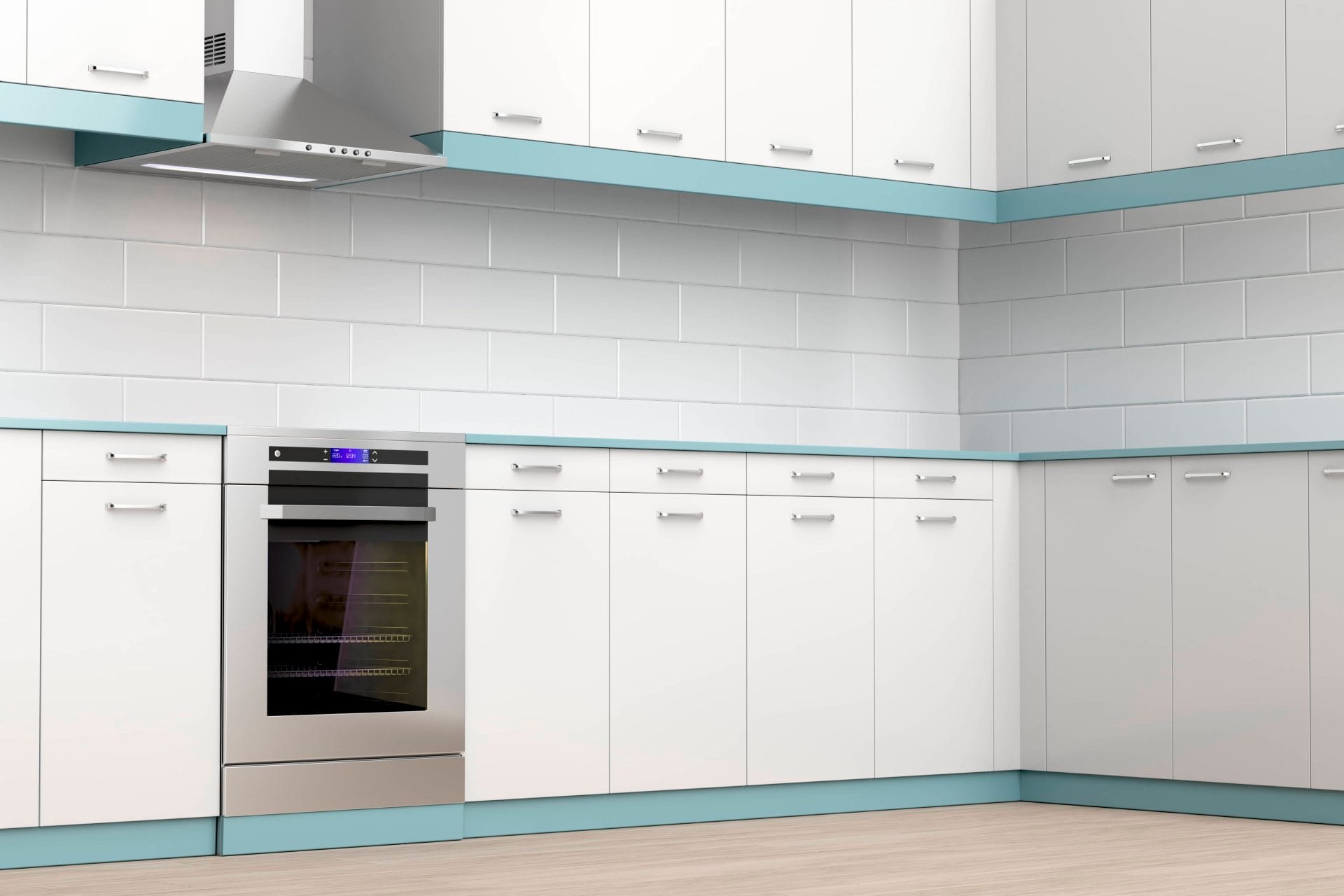Are you sick and tired of the odors or the lingering smell coming from your kitchen? Chimney is the solution for not just removing odors, but also absorbing fumes, smoke and grime from the kitchen. Before buying a chimney – consider if your kitchen is spacious enough for installation and also take into consideration factors such as power, material, weight and effective performance. Also compare the different brands of chimney. Also remember that kitchen chimney also add style and glamour to modular kitchens.

Factors to consider before purchasing a chimney
Types of Chimneys
The first factor to consider is to choose the type of kitchen chimney best suited for your kitchen. The major ones available in the Indian market are divided into 3 – 4 categories.
- Wall mounted chimney are most common type, fitted against the wall and cook-top with the hob being adjacent to the wall. The fumes are released via ducts in the exterior and nowadays you can get a ductless variant as well.
- Island chimney is hungabove the cooking hob, and this is hob is on a platform located in center of the kitchen, away from the wall.
- Built-in chimney is integrated inside the kitchen wood furniture work against the wall.
- Corner chimney are fitted in the corner of the kitchen where the cooking top, hob located at corner against the wall.

Chimney design
Depending upon the décor of your kitchen, you may choose the design–
- Conventional ones are the traditional pyramid type chimneys or straight line chimneys which are usually inexpensive, available in stainless steel. These straight lined chimney are ideal for space constraint Indian kitchens, and are equipped with a very powerful suction. These chimney’s can be fixed mostly in all types of kitchens.
- Contemporary kitchen chimney are stylish shapes, sizes and colors available in stainless steel and glass, fusion of both to blend smartly with the aesthetics of your modern kitchen. These are suited for open and designer kitchens and used for style and status symbol.
Size of the Chimney
Thumb rule to decide the size of kitchen chimney size is exactly or greater size than the size of your stove or hob but never ever smaller than the stove or hob as this may result in loss of efficiency of chimney. Ideally, for a typical Indian kitchen, opt for a 60 cm or a 90 cm chimney so for 2 burner stove, opt for 60 cm wide chimney and if you have 3-4 burner 90 cm chimney is the best optiton.
Suction Power
Suction power is the capacity of the motor to suck grime, smoke and odor from the kitchen. Suction power depends upon duct size and number of bends. It is measured in cubic meter per hour which may vary from 800 m3/h to 1250 m3/h and Indian kitchens need a chimney with higher suction capacity. Again the thumb rule for chimney suction power is that it should be able to change the air 10 times per hour. So calculate the air volume by calculating kitchen’s volume and next multiple kitchen chimney volume by 10. For instance, if kitchen’s width is 4m, length 4m, and height 2.5m the volume of the kitchen is therefore w x L x H = 4 x 4 x 2.5 = 40m3 and multiple this by 10. 40m3 x 10 = 400 m3 so the minimum suction power of the chimney you need must be 400m3/hr.
Types of Chimney Filters
Filters purify the air by filtering and absorbing dust, grime, oil particles and odour and Indian chimneys filters are classified into 3 categories.
Cassette filter – are made of layers of overlapping aluminum or stainless steel mesh. Gap between the mesh allows air to pass through it, oil grease particles stick to this mesh. In course of time, grease, oil particles clog the mesh. Cassette filters need to be cleaned every week for effective performance. Else with blockages, suction power and efficiency of the chimney is reduced.
Baffle filter — are best for Indian kitchens. Baffle is a flow control panel, made in multiple curve structure, which allow cooking to pass through these curve changing the direction of smoke air. During this process heavy grease, smoke is captured by the exhaust, while grease accumulated in an oil collector. The baffle filter needs very less maintenance and needs to be washed once in 3 months.
Carbon filter — also known as Charcoal filter which absorbs odor as is made up of black charcoal. These filters need replacement after around six months for optimum efficiency as the oil, smoke particles clog carbon filter and reducing the suction power.
Cleaning kitchen chimney
All Chimneys require periodic maintenance with cleaning the grease filter every fortnight. Cleaning the baffle filter is a easier than mesh filters. Opt for a chimney with an auto-clean feature to make it almost maintenance free and your life easier.
Motor and noise
Choose a chimney with TOP (thermal overload protector) which cuts of the power in case of overheat. Keep in mind noise level while buying your chimney and do pick a chimney which comes with silent-kit installed for added peace.
Warranty and Service
Most manufacturers give a one-year warranty; few offer a lifetime warranty check this out when buying your chimney as both warranty and after-sales service are important.
Kitchen chimney price
Straight lined kitchen chimney price-range in India starts from Rs.4000 to Rs.5000 with 60cm size chimney range starting from Rs.6000, whereas, 90cm size chimney begin at Rs.12000. Free installation, customization and personalization is also offered by a few manufacturers.
Miscellaneous other factors
Apart from the above mentioned factors, look into other aspects like manufacturer’s reputation, buzzer which indicates time for cleaning, LED light indicator for chimney’s malfunctioning, variable speed levels, detachable oil collector, auto-heat sensors etc.





















